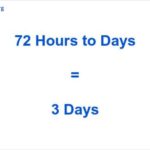“The Man Who Sold the World” by David Bowie is a timeless classic that has captivated generations with its haunting melody and thought-provoking lyrics. For aspiring guitarists eager to master this iconic song, tablature provides a valuable roadmap to navigate the intricacies of its chords and riffs. In this comprehensive guide, we’ll delve into the world of tablature, breaking down the key elements of “The Man Who Sold the World” and offering insights to help you perfect your rendition.
Understanding Tablature
Before we dive into the specifics of tablature for “The Man Who Sold the World,” let’s briefly explore what tablature is and how it differs from traditional sheet music. Tablature, often abbreviated as “tab,” is a form of musical notation that represents finger positions on the instrument rather than the pitch and duration of notes.
-
Why Tablature Matters
- Tablature is particularly valuable for guitarists because it provides a visual representation of where to place your fingers on the fretboard. This makes it an accessible tool for both beginners and experienced players, allowing them to quickly learn and reproduce songs without the need for extensive music theory knowledge.
-
Reading Tablature for “The Man Who Sold the World”
- To effectively use tablature for “The Man Who Sold the World,” familiarize yourself with the fret numbers, strings, and symbols commonly used in guitar tabs. Each line in the tab corresponds to a string on the guitar, and numbers on the lines indicate the frets where you should place your fingers.
The Man Who Sold the World Tablature Breakdown
- Intro and Verse: Begin your exploration of the tablature with the haunting introductory riff that sets the tone for the entire song. The open chords used in the verses contribute to the melancholic atmosphere of Bowie’s original recording.Pro Tip: Pay close attention to the timing and rhythm indicated in the tablature to capture the song’s distinctive feel accurately.
-
Chorus and Bridge
- The chorus of “The Man Who Sold the World” introduces a shift in dynamics, with power chords and melodic phrases creating a sense of intensity. Tablature provides a precise guide to navigate these changes smoothly, ensuring a seamless transition between sections.Experiment with variations in your strumming or picking techniques to add your own touch while staying true to the essence of the song.
-
Solo Section
- The solo section in “The Man Who Sold the World” is a highlight for many guitar enthusiasts. Tablature is an invaluable tool for breaking down intricate solos into manageable parts, allowing you to focus on mastering each segment before combining them for a seamless performance.Pro Tip: Use the tablature as a foundation for learning the solo, but don’t hesitate to inject your personal style and expression into your rendition.
-
Closing Thoughts
- As you work through the tablature for “The Man Who Sold the World,” remember that mastery comes with practice and dedication. Take the time to play along with the original recording, paying attention to nuances in timing and dynamics.Record yourself playing the song and listen for areas where you can refine your technique. This self-assessment can be a powerful tool for continuous improvement.
Conclusion
In conclusion, tablature is an invaluable resource for anyone looking to master “The Man Who Sold the World” on the guitar. Whether you’re a beginner or an experienced player, the detailed guidance provided by tablature allows you to break down the song into manageable sections, facilitating a more effective and enjoyable learning experience.













